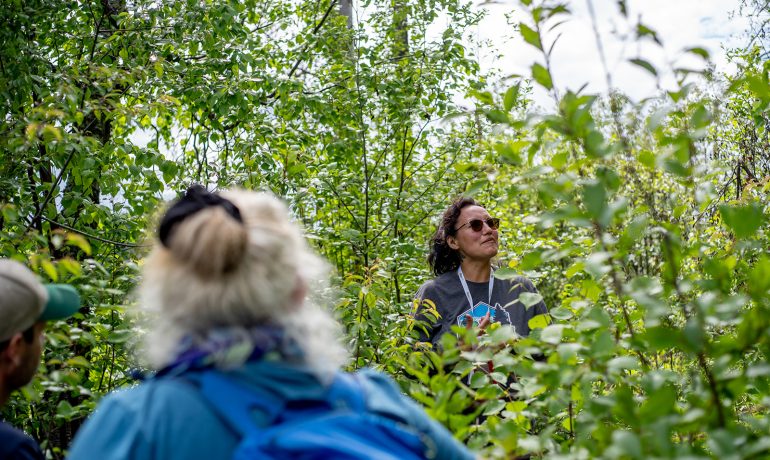From Kelly McCloskey at Tree Frog News:
Citing a long list of “unacceptable trends” inherited by his government after the 2017 election—such as rising log exports, falling AACs, tenure concentration and devastating forest fires—BC’s Forests, Lands, Natural Resource Operations and Rural Development Minister, Doug Donaldson prefaced his February 7th keynote presentation to the Association of BC Professional Foresters by opining on how these and other factors have resulted in an “erosion of public trust in how BC forests are managed”. “The result”, said Donaldson, “being forest-based communities and the people who live in them feeling frustrated and powerless”. Donaldson also noted the many market challenges facing the sector and world trade in general—such as low lumber prices, US trade protectionism, and the coronavirus outbreak—prior to updating the large crowd on eight associated actions undertaken or in process by his government.
First up was the second phase of government’s Forest and Range Practice Act review, which recently completed its public input process. According to Donaldson, “the key themes include the need for more oversight and accountability, integration of non-timber resources, and forest landscape-wide plans to reduce cumulative effects and help address climate change”. Minister Donaldson said the related legislation is being drafted with the hope introduction in the Spring of 2020.
With respect to the government’s Old Growth Strategic Review, the Minister noted the pending independent report by Al Gorley, RPF and Gary Merkel, RPF, on the public’s ecological, economic and cultural perspectives on old growth. Expected at the end of March, Donaldson said that once received, “the government will engage in the required government to government and First Nation discussions before the new strategy is determined”.
Other government actions addressed by Minister Donaldson include:
- Greater Utilization of Forest Residuals. Donaldson noted the economic hurdles in getting waste wood out of the forest and his Ministry’s actions to make it easier—such as alternative scaling methods. He also noted the import of renewed cost sharing with the federal government—currently between the Canadian Carbon Initiative and with FESBC—which he was confident would materialize in one form or another.
- Private Land Forest Management Program Review. Donaldson noted that the public review process is complete and the report posted, and he is now working with the key stakeholders to discuss policy options.
- Declaration on the Rights of Indigenous Peoples Act. Donaldson said the first step is to develop an action plan with First Nations to determine what pieces of legislation will be looked at first—with forestry being a likely candidate. He also noted the government’s legal commitment to be 100% transparent and thus the action plan will be a public document.
- Coast Forest Sector Revitalization. Donaldson noted some of the actions taken, such as the “fee in lieu” policy change to drive more timber to domestic facilities and the “lumber based stumpage model” to increase rate responsiveness. Although he noted recent stumpage rates had come down significantly, the labour dispute and lack of data make it too early to assess overall progress.
- Interior Forest Sector Revitalization. Donaldson commented that the community engagement process announced by the Premier last year is underway, with similar topics being raised, such as fibre utilization, tenure diversity, wildfire resilience, and value-added—but also the need for sensitivity to industry economics.
- Wildfire Crisis. Donaldson reflected on the impact of recent forest fire seasons and the progress made by having implemented 92% off the Abbott/Chapman report recommendations. According to Donaldson, the resulting increase in his budget last year allowed for earlier fire fighting preparations and community resilience efforts through FESBC.
Minister Donaldson closed by noting his excitement for the “many positive trends that position BC forestry for success in the future”. These stem from “public interest in climate change and the potential of forestry to be part of the solution”, according to Donaldson. This includes sustainable forestry practices, increasing carbon sequestration through silviculture, and substitution of wood for fossil fuel intensive products.
When it came to Q&A – the audience interactive app displayed a long list of questions from delegates. Leading the pack, with 71 votes was “Are there too many letters in FLNRORD?”. With a chuckle, the minister explained that when you represent 50 different acts, your name needs to have a minimum of 50 letters to reflect that!
As always, thanks to Tree Frog News for their excellent coverage of BC forestry news and events like the ABCFP AGM. Access their photo gallery from ABCFP 2020 here.
Related Post
As Published in Canadian Forest Industries Magazine, Pulp & Paper Magazine and Canadian Biomass Magazine
Jennifer Gunter’s Op Ed, “Community Forests: Rooted in Community,
Minister of Forests Mandated to Expand BC’s Community Forest Program
In the recently released mandate letter to the Minister



